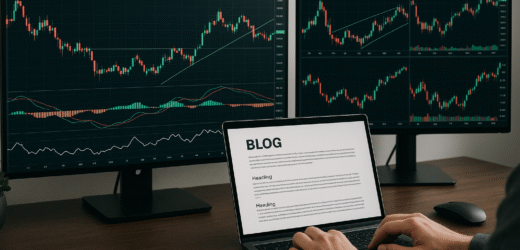In stock trading, understanding the types of orders you can place is crucial for executing your investment strategy effectively. The two primary order types are market orders and limit orders.
Market Orders
A market order is an instruction to buy or sell a security immediately at the current market price. This type of order guarantees that the order will be executed, but it doesn’t guarantee the execution price. Market orders are ideal when the priority is to execute the trade promptly, especially for highly liquid large-cap stocks, futures, or ETFs. However, in fast-moving or volatile markets, the price at which a market order is executed may differ from the last traded price due to rapid price changes.
Limit Orders
A limit order allows you to specify the maximum price at which you’re willing to buy or the minimum price at which you’re willing to sell a security. This type of order ensures that you won’t pay more or receive less than your desired price; however, execution isn’t guaranteed unless the market reaches your specified price. Limit orders are particularly useful when trading thinly traded or highly volatile assets, where controlling the execution price is essential.
Key Differences
- Execution Guarantee: Market orders offer a high certainty of execution but with uncertain prices, while limit orders provide price certainty but with uncertain execution.
- Use Cases: Market orders are suitable when immediate execution is more critical than the price, such as entering or exiting positions in liquid markets. Limit orders are preferable when you have a specific price target and can wait for the market to meet your conditions.
When placing a limit order to purchase a stock at $10, you’re setting a maximum price you’re willing to pay per share. This means your order will only execute at $10 or less, ensuring you don’t pay above this amount. It’s possible the order could fill at a lower price if the market offers shares below $10.
The Four Main Types of Stock Orders
Understanding the primary stock order types can enhance your trading strategy:
| Order Type | Description | When to Use |
|---|---|---|
| Buy Limit | An order to purchase a stock at or below a specified price. | Use when aiming to buy at a price lower than the current market value. |
| Sell Limit | An order to sell a stock at or above a specified price. | Use when aiming to sell at a price higher than the current market value. |
| Buy Stop | An order to buy a stock once its price reaches a specific level above the current market price; becomes a market or limit order upon activation. | Use when anticipating the stock price will continue rising after reaching a certain point. |
| Sell Stop | An order to sell a stock once its price drops to a specific level below the current market price; becomes a market or limit order upon activation. | Use to limit potential losses by selling if the price falls to a predetermined level. |
Market and Limit Order Examples
To illustrate how market and limit orders function, consider the following scenarios:
- Market Order Example: Suppose you intend to buy 100 shares of XYZ Corporation. By placing a market order, the purchase executes immediately at the current market price, say $50 per share. The total expenditure would be $5,000. However, in volatile markets, the final price might differ from the expected $50 due to rapid price fluctuations.
- Limit Order Example: Assume you wish to acquire 100 shares of XYZ Corporation but are willing to pay no more than $48 per share. By setting a buy limit order at $48, the order will execute only if the stock’s price drops to $48 or below. If the price doesn’t reach this level, the order remains unfilled until the specified conditions are met or the order expires.
Understanding these order types and their appropriate applications can help you navigate the stock market more effectively and align your trading decisions with your financial goals.



